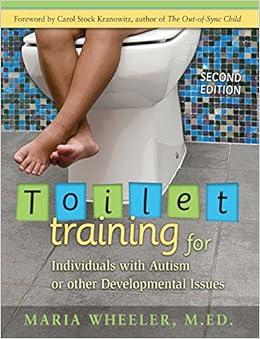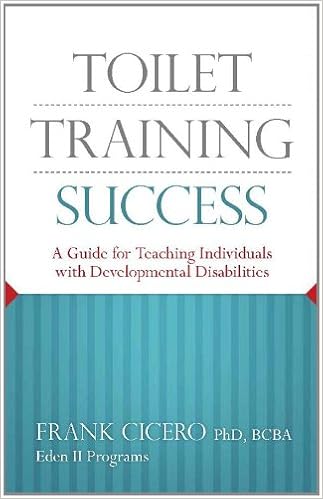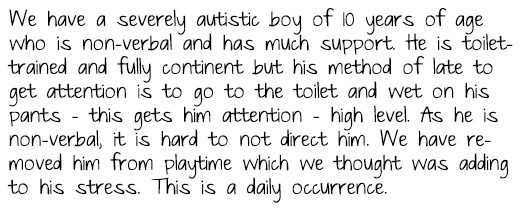Toilet training can be easier! Toilet Training for Individuals with Autism by Maria Wheeler, MEd, and Toilet Training Success by Frank Cicero, PhD, BCBA, offer toilet training tips and strategies for parents and professionals to implement into their programs using the methods and principles of Applied Behavior Analysis.
 Toilet Training for Individuals with Autism presents clear solutions for transitioning children from diapers to underpants, covering how to:
Toilet Training for Individuals with Autism presents clear solutions for transitioning children from diapers to underpants, covering how to:
- gauge readiness
- identify and reduce sensory challenges
- overcome anxiety
- develop habits and routine
- teach proper use of toilet, sink, toilet paper
- and more!

Toilet Training Success introduces the reader to effective toilet training interventions for individuals with developmental disabilities, including urination training, bowel training, increasing requesting, and overnight training. The manual also addresses when to begin toilet training and how to use positive reinforcement, collect data, and conduct necessary assessments prior to training.
Use our promotional code POTTY20 at check-out this week to redeem your savings on either or both of these manuals!
| * | Promotion is valid until May 17, 2016 at 11:59pm EST. Offer cannot be applied to previous purchases, combined with any other offers, transferred, refunded, or redeemed and/or exchanged for cash or credit. Different Roads to Learning reserves the right to change or cancel this promotion at any time. To redeem offer at differentroads.com, enter promo code POTTY20 at checkout. |



